Sauna bathing
| Sauna bathing | ||||
|---|---|---|---|---|
| In the national inventory | ||||
|
On average, Finns have their first bath in a sauna before they turn six months old and will continue to bathe there roughly once every ten days throughout their lives. Finns bathe in saunas more than 200 million times a year, which makes it the most frequently practiced form of intangible cultural heritage in Finland.
The word sauna is the most widely spread Finnish loanword in other languages, and sauna bathing is a significant part of our national image. There are approximately 3.2 million saunas in Finland, meaning that it would be possible for all Finns to bathe simultaneously. The number of saunas also guarantees that every Finn has access to one if they so wish.
Sauna bathing is such a natural part of many Finnish people’s lives that we do not always realize we are simultaneously maintaining the vitality of living cultural heritage and passing it on. However, this happens every time we bathe in a sauna. In addition, even those who do not usually bathe in saunas are familiar with the process, which goes to show how prevalent the tradition is.
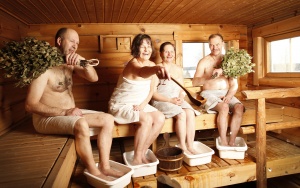
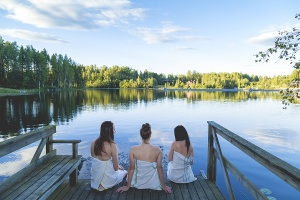
Practitioners and people who know the tradition well
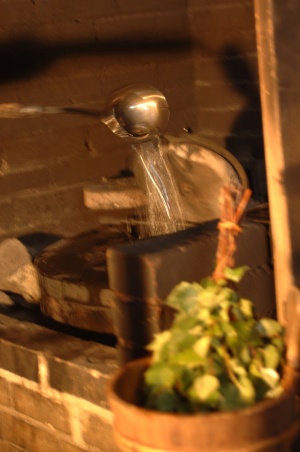
Several groups in Finland practice and transmit this tradition. For centuries, sauna bathing has been an integral part of Finnish society and culture, resulting in a widespread tradition that is also being passed on to new generations by a multitude of people and at various levels.
The largest group of those that bathe in saunas and pass this tradition on is formed by the overwhelming majority of Finns to whom sauna bathing is part of everyday life. Finns bathe in saunas throughout their lives. Therefore, practicing this tradition becomes a natural part of many Finns’ entire lifespan. Traditionally, people would have a sauna on Saturday, but nowadays many people also bathe on other days.
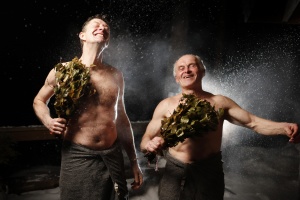
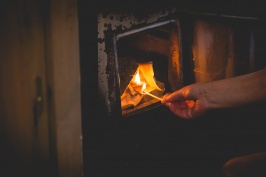
Another group of active transmitters of the tradition is formed by Finnish sauna clubs, recognising the importance of this practice. These clubs specialize in safeguarding certain aspects of the sauna culture or the ways of bathing in a specific region, and in addition to sauna bathing, they usually aim to maintain Finnish sauna culture and aid in its evolution. Sauna clubs also conduct active work to arrange various types of sauna-related events. Events intended for both club members and the public include sauna festivals under a range of themes, meets and parades.
The third group of people practicing and transmitting the sauna tradition are those who operate commercial saunas. These include communal saunas and saunas available to hire, as well as saunas built at recreational and sports facilities, such as swimming halls. In addition, Finnish hotels and other accommodation providers have commercial saunas, providing their customers with an opportunity to experience sauna bathing. Those who manage commercial saunas offer the public a place to bathe, while also maintaining the vitality of one of the forms of the sauna tradition. Furthermore, businesses that manufacture equipment required in saunas, such as stoves, water ladles and seat covers, also practise, maintain and shape the tradition of sauna bathing. Part of their role is to develop new forms of bathing and related technology, and thanks to the sauna innovations created as a result of their active participation, modern bathing can take place in various types of sauna, such as smoke and electric ones.
In addition to what has been described above, the practitioners and transmitters of the sauna bathing tradition include universities and other research institutions with their scientific studies on the sauna, artists with their works depicting saunas, and media with their publications discussing various aspects of our sauna culture. Furthermore, virtually all of our most notable writers have written about the sauna, and it has also been a popular theme in visual arts. Both paintings and sculptures have been created depicting saunas, and in addition to folk songs, the sauna features in both popular and classical music. The sauna is also a regular theme in applied arts, such as stamps.
Practicing of the tradition
How to sauna bathe
Sauna bathing is a form of a sweat bath, during which the humidity and heat are regulated by throwing water onto a stack of heated rocks on a stove, or kiuas, with a ladle. The main part of the sauna tradition is the bathing itself, which naturally takes place in a sauna. The rocks release hot steam, löyly, which undulates down onto the bathers’ skins, causing perspiration and a sensation of intense heat. The temperature while bathing is relatively high, typically 70–105°C.
Bathers alternate between hot baths and cooling down. They typically spend 5–15 minutes in the hot room and then move to either an indoor or outdoor cooling area. In the summer, this may include swimming, and in the winter, dipping into an ice hole or rolling in the snow. This cycle is repeated for as many times as desired, typically two or three times but occasionally as many as ten. No strict rules exist regarding the practice, and instead the bathers’ own experience is these days emphasized – everyone is the expert of their own preferences when it comes to sauna bathing.
To conclude the bathing, the bathers wash, rest for a moment and finally put their clothes back on. While cooling down, and sometimes even in the hot room, bathers drink plenty of fluids, as strong perspiration can easily interfere with the body’s fluid balance.
For many people, the act of heating up the sauna, lighting a fire and gazing into it, and monitoring the rising heat are also part of the pleasure involved in sauna bathing.
Even though the number of people that practice and transmit this tradition is significant and the tradition has, for a considerable time, been widespread around Finland, the core of sauna bathing, i.e. the alteration between sessions of hot baths and cooling down, has largely remained the same between different bathers.
Sauna types
There are many types of saunas. The original way to heat a sauna is to use wood. The smoke sauna is the oldest and most traditional type of sauna. In smoke saunas, there is smoke in the room when the stove is being heated but the smoke is aired out after the heating. Nowadays, it is more common to have a sauna with a chimney that leads the smoke away. Today, saunas can be heated also in other ways of which the most common way is to have an electrical stove.
When?
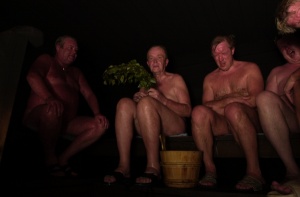
Sauna bathing is practiced anytime and anywhere. The traditional day to take a sauna is Saturday but nowadays the Finns can have a sauna any day of the week. It has been estimated that there are about 3.2 million saunas in Finland. Sauna bathing is practiced in public as well as in private saunas.
Sauna is a part of everyday life as well as different kinds of holidays and celebrations. Part of the sauna tradition is to take a sauna during yearly holidays.
In the past, the tradition of bathing in a sauna during festivals was connected to various sauna rituals, ranging from sacrificial meals left in the sauna for the dead to ritualistic cleansing of the bathers’ bodies. These days, sauna bathing is associated with the Midsummer and Christmas festivities. Taking a Christmas sauna is a very important part of the tradition. Bathing in sauna on Christmas Eve starts the relaxed Christmas celebration. It is also connected to other celebrations, such as weddings, and a bridal sauna, for example, is still a living part of the historical tradition. Bathing in a sauna during a hen or a stag night is one of the modern forms of the tradition.
The background and history of the tradition
The sauna tradition has been practiced for thousands of years. Saunas began to emerge in Finland with the first settlements after the Ice Age. These ancient saunas were earth saunas: holes dug in the ground and covered with animal skins. During the Iron Age approximately 1,500–2,000 years ago, people began constructing their saunas from logs as more developed building tools allowed for the carving of sturdy corner joints. This sauna type, a chimneyless smoke sauna made from logs, remained the more popular type and saw very little change up until the 1930s.
Sauna stoves with chimneys guiding the smoke out were introduced to malting saunas in the cultivated areas of Western Finland during the latter half of the 17th century, which is when saunas also became a common feature of farmyards. This type of sauna was a versatile agricultural building that could also be referred to as a ‘yard sauna’.
One of the oldest printed forms of the Finnish word describing the hot steam is ‘laeyly’, used by Mikael Agricola, the father of literary Finnish, in his translation of the New Testament in 1548. Since then, a large number of other sauna-related vocabulary has entered the Finnish language. The concepts of an ‘apartment sauna’ and ‘cottage sauna’ are based on location, while ‘smoke sauna’ and ‘electric sauna’ describe the heating method. A ‘malting sauna’ and a special palvisauna, literally ‘meat smoking sauna’, refer to the other uses that saunas have had besides bathing, and ‘earth sauna’, ‘log sauna’ and ‘tent sauna’ have been named after their forms of construction. ‘Grain drying sauna’, ‘hay stacking sauna’ and talkoosauna, arranged in return for help with farm work, describe bathing after certain types of chores. ‘Christmas sauna’ and ‘Midsummer night’s sauna’ are linked to major festivities, and a ‘bridal sauna’ was used to prepare for a wedding, similarly to sauna bathing at modern hen parties.
In the 1940s, continuously heated sauna stoves, which only need to be heated during the bathing, began gaining popularity. This stove type became more common, because it required less wood for the heating. Electric saunas began to be more widely built in the 1950s. The first apartment saunas were built already in the 1940s, but did not become common until the 1970s.
Historically, saunas were used for many other purposes besides bathing, such as cooking, making clothes, tending to the sick, preparing the deceased for burial and giving birth. Nowadays, however, they are mainly used for relaxation.
In an agrarian society, saunas also served an important social function: young people could mingle while processing flax in a sauna or working in a malting sauna, as they would have had time to play games and get to know one another. Saunas were also good for courting, as couples could easily hide there from prying eyes.
Many magical elements have also been associated with the sauna throughout its history, and it has been a place of ritualistic cleanliness. A blessing was offered when entering a sauna, and sauna bathing functioned as an important transition from everyday life to celebrations. In addition, every sauna was believed to house a protective spirit, an elf or a guardian, and it was considered good manners to greet it when entering. It was also possible to see this spirit, especially if bathing too late at night.
These mystical beliefs were associated with grand celebratory saunas, such as the Christmas sauna, in particular. The bathing took place early in the day, because this was believed to boost the work in the household throughout the following year. Throwing beer onto the stove improved the harvest of barley, and if bathers managed to remain completely silent during their Christmas sauna, they would avoid catching head lice and other ectoparasites for a whole year. Furthermore, predictions about the future could be made by throwing the birch whisk, vihta, on the sauna roof. If its handle pointed towards a church, it meant death for the old and a wedding for the unmarried.
Bridal saunas were used to boost a new bride’s fertility, and expectant mothers were encouraged to bathe in the sauna frequently so that their child would also learn to love it. Labor was made easier if the sauna was heated with wood from a tree struck down by lightning.
Even though modern Finns do not believe in the magical effects of the sauna, some of these rituals are still playfully practiced. Many people will bathe in quiet contemplation of the upcoming year during a Christmas sauna, even though they are not attempting to affect their future with magic.
The transmission of the tradition
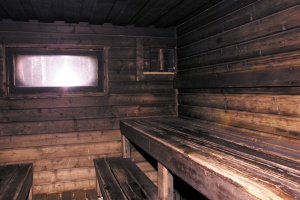
Sauna bathing is often considered an important and unique part of the Finnish way of life. The tradition is passed on from parents to children during both everyday life and the Christmas sauna. A Finnish child will learn the traditional sauna bathing practices from their parents the same way they are taught good manners as a natural part of growing up. This makes sauna bathing one of the most important shared rituals that Finnish families have.
Other interesting events where the tradition is transmitted include bathing sessions arranged for foreign visitors to Finland, available in hired saunas, for example. During these events, the sauna bathing tradition is verbalized in a way that for the majority of Finns is tacit knowledge that normally needs not be conveyed out loud. This means that the tradition is re-verbalized by the sauna tourism, through which the tradition will change and evolve. The sauna clubs have also created bathing instructions in several languages, intended especially for immigrants, in order to verbalize and pass on the tradition.
Furthermore, sauna bathing is part of many other functions and aspects of life: the activities of various associations, voluntary work and festivities. In addition, sauna clubs promote the Finnish sauna culture and appropriate sauna customs around the country. Finland has hundreds of regional and local sauna clubs that aim to promote, develop and maintain our sauna culture. The International Sauna Association (ISA) functions as the international umbrella organization for the world’s sauna clubs, and at the request of the sauna clubs in other countries, the association’s chair is always Finnish, which also speaks volumes of the significance of the Finnish tradition and how it is viewed elsewhere.
Sauna bathing is possible in Finland for anyone wishing to do so. Traditionally, it is done naked without any external status symbols, which makes all the bathers equal. This highlights the notion of parity among bathers. Therefore, sauna bathing also promotes the mental and social well-being of many of the practitioners.
These days, bathing turns are based on the traditional gender division of men and women, but mixed saunas are becoming more common. This in turn promotes gender diversity. Also accessibility is taken into account when constructing modern saunas. The building code governs the way in which saunas must be built, so that they can be accessed with a wheelchair, for example. Accessibility must also be factored in when designing private sauna facilities. However, the best thing about bathing in a sauna is that everyone is the expert of their own bathing style, as only they know how many ladles of water is enough and when it is time to cool down.
The future of the tradition
“Sauna culture in Finland” was inscribed to the UNESCOs Representative List of the Intangible Cultural Heritage of Humanity in December 2020. The file was prepared by the Finnish Sauna Society in cooperation with many Sauna societies all over Finland and the Finnish Heritage Agency. As part of the application process, the sauna community has identified a series of safeguarding measures designed to support the vitality of the sauna traditions. The Sauna Circle, a network of sauna societies, was established in August 2019 to take these initiatives further.
The future is looking bright. All Finns are familiar with the sauna and nearly all Finns take a sauna at least once in a while. The sauna tradition has many forms, as there may be many local and family-specific differences between sauna traditions. As in many living traditions, there is no one right way to take a sauna. Finland has many public saunas, such as those at swimming pools and in sports facilities. There are also a few open-to-all public saunas where anyone can go, especially in the Helsinki Metropolitan Area and young urban people in particular have adopted public saunas as their own spaces and built their own. Apartment block companies have traditionally built building-specific saunas in their buildings and private saunas are built in many new apartments. The sauna tradition is a living, evolving tradition.
The Finnish sauna community feels it is important that people abroad become aware of the way in which the Finnish sauna tradition is practiced. Adding sauna bathing to Unesco’s list will increase awareness regarding the sauna culture and the significance of sauna bathing to Finnish society. Simultaneously, it will also increase awareness of the various forms of Finnish intangible cultural heritage and of people as the transmitters and further developers of living cultural heritage.
The communities behind this submission
- Alisniemen sauna, Nokia
- Helsinginniemen Heitto ry, Helsinki
- Hyvinkään Löylynlyömät, Hyvinkää
- Imatran Talviuimarit ry, Imatra
- Jyvässeudun Perinnesaunojat ry, Jyväskylä
- Jäämeren uimarit / Sallan Latu ja Polku ry, Salla
- Kansainvälinen Saunaliitto (ISA)
- Kansainvälinen Savusaunaklubi ry
- Lauhanvuoren perinne ry
- Löylyveljet ry, Kouvola
- Oulun Rantasaunaseura ry, Oulu
- Paimion Saunaryhmä, Paimio
- Pispalan saunayhdistys ry - Rajaportin Sauna, Tampere
- Polarin Saunakerho ry, Lappeenranta
- Polyteknikkojen Saunaseura ry, Otaniemi
- Saimaan Saunaseura ry, Lappeenranta
- Sauna Arla perinneyhdistys ry, Helsinki
- Sauna from Finland ry
- Saunahermannin Ystävät ry, Helsinki
- Saunamestari Kilta ry
- [1]
- Saunaseura KUUMA ry, Kerava
- Saunaseura Löylynlyöjät ry, Ikaalinen
- Saunaseura SaunaMafia ry, Vantaa
- Saunaseura Vastaisku ry, Helsinki
- Siirrettävien saunojen kokoontumisajot ry, Teuva
- Sompasaunaseura ry, Helsinki
- Suomen Kupparit ja Saunaterapeutit ry
- Suomen Saunakulttuuri ry
- Suomen Saunaseura ry
- Taivaannaula ry
- Teuvan Saunaparaati Saunanturvajoukot, Teuva
Bibliography and links to external sources of information
Other supporters of the submission
Elämysten ja Ystävyyden kartano, Rautalampi, Forum Hoitosauna, Turku, Herrankukkaro Oy, Naantali, [2], [3], Saunaterapia.com, Saunologia.fi, Sisu savusauna, Travellamo
Websites
Website of the Saunarinki network
Facebook-page of the Finnish Sauna Society
Information about other sauna societies
Finland's quirky love for saunas - thisisFINLAND
Sauna culture in Finland at UNESCO's website
Literature
Aaland, Mikkel (1978) Sweat. The Illustrated History and Description of the Finnish Sauna, Russian Bania, Islamic Hammam, Japanese Mushi-buro, Mexican Temescal, and American Indian & Eskimo Sweat Lodge. Capra Press.
Arstila, A. (1983) Suomalainen sauna: The Finnish Sauna. Espoo: Weilin & Göös.
Dahlgren, M. & Nurmelin, M. (1998) Sauna, Sisu & Sibelius for businesspeople: a survival guide to Finnish. ISBN 952-9660-18-9. Helsinki: Yrityskirjat Oy.
Eisalo, A. (1956) Effects of the Finnish Sauna on Circulation: Studies on healthy and hypertensive subjects. Helsinki: University of Helsinki. (Dissertation, Medicine and Physiology)
Jokinen E. (1989) Children´s physiological Adjustment to Heat Stress during Finnish Sauna Bath as studied on a climatic Chamber. Turku: University of Turku. (Dissertation, Medicine and Physiology)
Karesoja, M. (1975) Blood Platelet Function and clotting Activity during Finnish Sauna Bath. Helsinki: University of Helsinki. (Dissertation, Medicine and Physiology)
Kauppinen, K. (1989) Sauna and Winter swimming. Winter Swimmers, their Health Status, and physiological Responses to experimental Exposures to Heat, Cold, and alternating Heat and Cold. Helsinki: President Urho Kaleva Kekkonen Institute for Health Promotion Research and University of Helsinki. (Dissertation, Medicine and Physiology)
Konya, Allen & Burger, Alewyn (1973) The International Handbook of Finnish Sauna. Lontoo: The Architectural Press.
Laukkanen, J. A., Laukkanen T., Kunutsor, S. K. (2018) Cardiovascular and Other Health Benefits of Sauna Bathing: A Review of the Evidence. Mayo Clinic Proceedings, 93 (8): 1111-1121. https://www.ncbi.nlm.nih.gov/pubmed/30077204
Luurila, O. J. (1980) Arrhytmias and other cardiovascular Responses during Finnish Sauna and Exercise Testing in healthy Men and postmyocardial Infarction Patients. Helsinki: University of Helsinki. (Dissertation, Medicine and Physiology)
Nordskog, Michael (2010) The Opposite of Cold: The Nothwoods Finnish Sauna Tradition. University of Minnesota Press.
Pentikäinen, Juha (ed.) (2001) The Finnish Sauna, the Japanese Furo, the Indian Inipi: Bathing on Three Continents. Helsinki: Building Information.
Pystynen, P. (1961) Effect of the Finnish Sauna Bath on maternal Blood Circulation and Fluid and Electrolyte Balance in Toxemia of late Pregnancy. Helsinki: University of Helsinki. (Dissertation, Medicine and Physiology)
Seesmeri, L. (2018) Sauno itsellesi menneisyys. Turku: University of Turku. (Dissertation, Humanistic Science)
Talve, I. (1960) Bastu och torkhus i Nordeuropa. Stockholm: Univeristy of Stockholm. (Dissertation, Humanistic Science)
Harald Teir, Yrjö Collan ja Pirkko Valtakari (ed.) (1976) Sauna Studies. Papers read at the 6. International Sauna Congress in Helsinki on August 15-17, 1974. Helsinki-Vammala.
Vähä-Eskeli, K. (1991) Thermal Stress in Pregnancy. Turku: University of Turku. (Dissertation, Medicine and Physiology)
